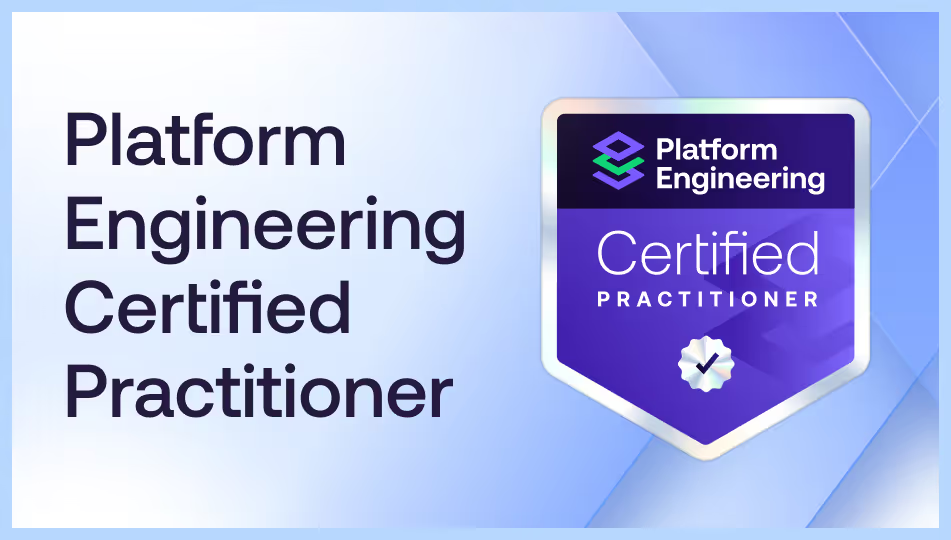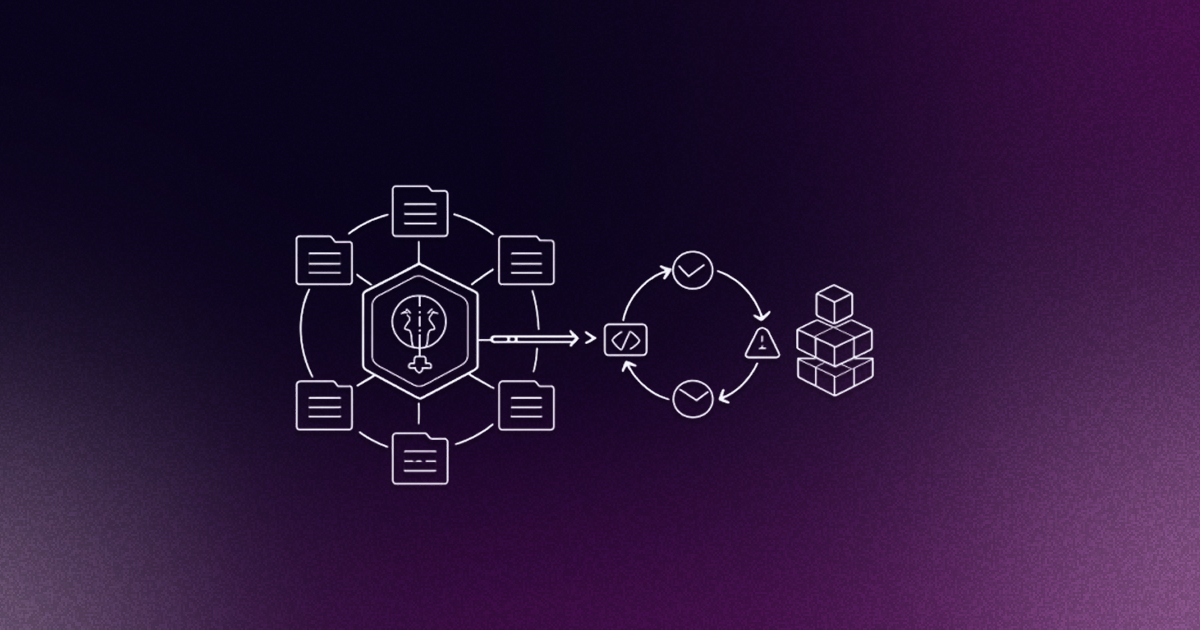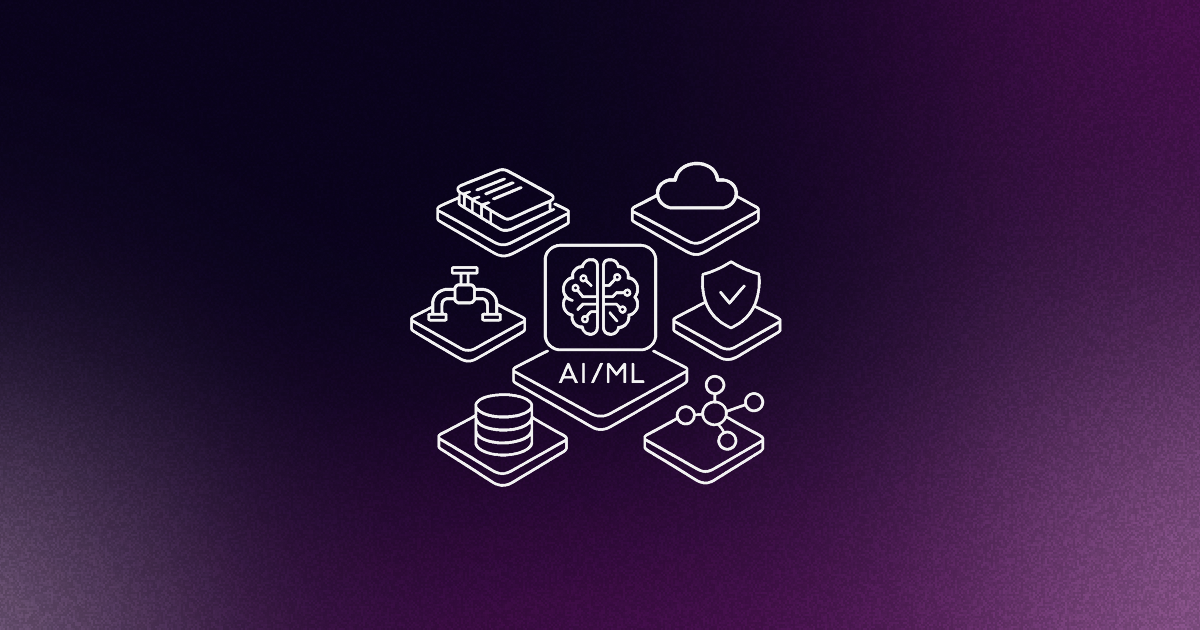Platform engineers face increasingly complex environments where managing dozens of tools, services, and integrations creates significant cognitive overhead for development teams. Navigating these environments can be time-consuming for developers who want to build, test, and release applications efficiently. In response, organizations are adopting new ways to organize and access developer resources.
One solution is the internal developer portal, often confusingly referred to as an "IDP". This guide explores what internal developer portals are, clarifies the terminology, and explains how they fit into modern engineering environments.
This guide is for platform engineers, DevOps professionals, and engineering leaders who want to understand internal developer portals and evaluate whether they're right for their organization.
What is an internal developer portal
An internal developer portal is a web interface that developers use to access platform capabilities. It serves as the unified interface layer that abstracts the complexity of your organization's development toolchain and platform services.
The terminology requires clarification: "IDP" refers to both Internal Developer Platforms and internal developer portals, creating ambiguity in platform engineering discussions. The platform is the entire system - all the tools, automation, and infrastructure that support software delivery. The portal is just the visual interface that sits on top of that platform.
Gartner defines internal developer portals as "the interface through which developers can discover and access internal developer platform capabilities." The portal lives in what platform engineers call the developer control plane - the layer where developers interact with and configure platform resources.
How portals connect to platforms
Portals aren't the only way to interact with your platform. Developers can also use command-line tools, APIs, code-based interfaces like the Score specification, or natural language interfaces like AI tools. The portal doesn't replace these tools. Instead, it gives developers a visual option when they want it.
The real work happens in the backend through platform orchestrators. These systems read developer requests (like "I need a PostgreSQL database") and match them to the rules your platform team has set up. The portal connects to these orchestrators, showing information and actions through a clean interface while the orchestrator handles the heavy lifting.
Core features that make portals useful
Internal developer portals typically include several key features that solve real problems for development teams.
Software catalogs
Software catalogs list all the services, applications, and APIs in your organization. Rather than navigating fragmented documentation or ad-hoc knowledge sharing, developers gain centralized visibility into existing services, ownership models, and service dependencies.
Scaffolding templates
Scaffolding templates provide ready-to-use project structures that follow your organization's standards. When a developer starts a new microservice, they can pick a template that already includes the right configuration, security settings, and deployment setup.
Self-service actions
Self-service actions let developers provision environments, deploy code, or run workflows without waiting for manual approvals. These actions integrate with existing automation workflows through abstracted interfaces that hide underlying orchestration complexity.
Quality scorecards
Quality scorecards show whether services meet your production standards. A scorecard might check for security vulnerabilities, test coverage, or compliance with architectural guidelines before code goes live.
Portal analytics reveal adoption patterns
Most portals track how developers use different features. You can see which services get accessed most often, which templates are popular, and how frequently people use self-service actions.
Advanced portal implementations incorporate feedback mechanisms that enable platform teams to measure developer experience metrics and identify adoption barriers.
Platform teams can also track metrics like time-to-onboard new developers or how often people use the portal instead of asking for help in Slack.
Three ways organizations use developer portals
Developer portals solve three main problems that platform teams encounter regularly.
Reducing cognitive load
Reducing cognitive load happens when you centralize scattered information. Developers often waste time hunting for the right documentation, figuring out which version of a tool to use, or remembering how to deploy to staging. A portal puts these resources in one place, so developers spend more time coding and less time searching.
Enabling consistent governance
Enabling consistent governance works through what platform engineers call "golden paths" - pre-approved ways of doing common tasks. When developers use portal templates and workflows, they automatically follow security policies and compliance requirements. The portal can show whether a project meets these standards and highlight issues before deployment.
Providing organizational visibility
Providing organizational visibility means everyone can see what's being built and who owns it. The portal displays all services, their dependencies, and their maintainers. This prevents teams from building duplicate services and makes it clear how different parts of the system connect.
Research shows that organizations using developer portals report faster onboarding for new team members, more predictable software delivery timelines, and better software quality through consistent standards.
Current market and technology options
The internal developer portal market is still young. Current adoption sits between 5% and 20% of target organizations as of 2024, putting it in what analysts call the adolescent stage.
Backstage dominates the open-source space. Originally built by Spotify and now part of the Cloud Native Computing Foundation (CNCF), Backstage has a wide range of adopters worldwide.
You can also buy commercial portal solutions. These typically offer more features out of the box but may be less customizable than open-source alternatives.
The market breaks into four categories:
- Standalone Backstage providers who help you deploy and customize the open-source framework
- Proprietary portal vendors who build their own solutions from scratch
- DevOps platforms that add portal features to existing tool suites
- Bundled offerings that combine portals with broader platform capabilities
Choosing the right portal approach
When evaluating portal options, consider these factors:
- Integration flexibility: Can the portal connect to your existing tools for source control, CI/CD, monitoring, and security?
- Customization requirements: Do you need to build custom features, or can you work with out-of-the-box functionality?
- Multi-persona support: Will operations, security, and management teams also use the portal, or just developers?
- Open ecosystem: Can you add plugins or extend functionality as your needs evolve?
Common implementation mistakes to avoid
Portal implementations frequently fail due to systematic antipatterns that platform engineering teams can identify and avoid through proper planning.
Treating Backstage as plug-and-play
Treating Backstage as plug-and-play leads to disappointment. Backstage provides a framework, not a finished product. You'll need to customize it, develop plugins, and maintain it on an ongoing basis. Teams that expect it to work immediately often discontinue their implementation efforts fairly fast, with little to show for it.
Building portals before platforms
Building portals before platforms creates problems because the portal interface can't provide capabilities that don't exist in the underlying system. The portal interface can't provide self-service capabilities if the underlying automation and integration don't exist. Start with platform capabilities, then add the portal interface.
Ignoring developer workflows
Ignoring developer workflows creates adoption problems. If the portal doesn't connect to tools developers already use daily, like GitHub, Jenkins, or Kubernetes, they'll ignore it. Successful portals integrate into existing workflows rather than replacing them.
Skipping user research
Skipping user research results in portals that solve the wrong problems. Platform teams sometimes build features they think developers want without actually asking developers about their pain points.
Getting the implementation right
Successful portal implementations follow a few key patterns:
- Start small: Build a minimum viable portal with just a service catalog and basic templates, then iterate based on feedback
- Dedicate a team: Treat the portal as a product with a dedicated product owner and development resources
- Measure adoption: Track usage metrics and developer satisfaction to guide future development
- Integrate deeply: Connect the portal to your CI/CD pipeline, monitoring systems, and other core infrastructure
Getting started with your first portal
Begin by mapping your current platform maturity. Look at what automation, self-service, and catalog features already exist in your organization. Identify gaps where a portal could add immediate value.
Talk to your stakeholders early. Developers are your primary users, but operations, security, architecture, and management teams will also interact with the portal. Understanding their different needs prevents scope creep and ensures broader adoption.
For technology selection, most teams choose between building on Backstage or buying a commercial solution. Backstage offers more flexibility but requires significant development effort. Commercial options provide faster time-to-value but may be less customizable.
Plan your implementation in phases. Start with core features like a software catalog and scaffolding templates. Add self-service actions, scorecards, and advanced analytics in later phases based on user feedback and adoption metrics.
Join the platform engineering community
Building effective developer portals requires learning from others who've tackled similar challenges. Join the Platform Engineering community, check our course offerings on Platform Engineering University and connect with peers who are implementing portals, sharing lessons learned, and discussing best practices in our Slack community.
Frequently asked questions about internal developer portals
What is the difference between an Internal Developer Platform and internal developer portal?
An Internal Developer Platform is the complete system of tools, automation, and processes that support software delivery. A portal is just the user interface that sits on top of the platform, giving developers a visual way to access platform capabilities.
How long does it take to implement an internal developer portal?
Implementation timelines vary widely based on your starting point and chosen approach. Teams building on existing platform capabilities can deploy a basic Backstage portal in 3-6 months. Organizations starting from scratch typically need 6-18 months to build both platform foundations and portal interface.
Can small engineering teams benefit from internal developer portals?
Small teams (under 20 developers) often get limited value from portals since informal communication works well at that scale. Portals become more valuable as teams grow beyond 30-50 developers, and coordination becomes harder.
What is the difference between Backstage and commercial developer portal solutions?
Backstage is an open-source framework that requires customization and ongoing maintenance but offers unlimited flexibility. Commercial solutions provide more features out of the box and professional support, but may be less customizable and more expensive.
How do internal developer portals improve developer experience?
Portals reduce the time developers spend searching for information, waiting for approvals, or figuring out how to use internal tools. By centralizing resources and enabling self-service, portals let developers focus more time on writing code and less on operational tasks.












